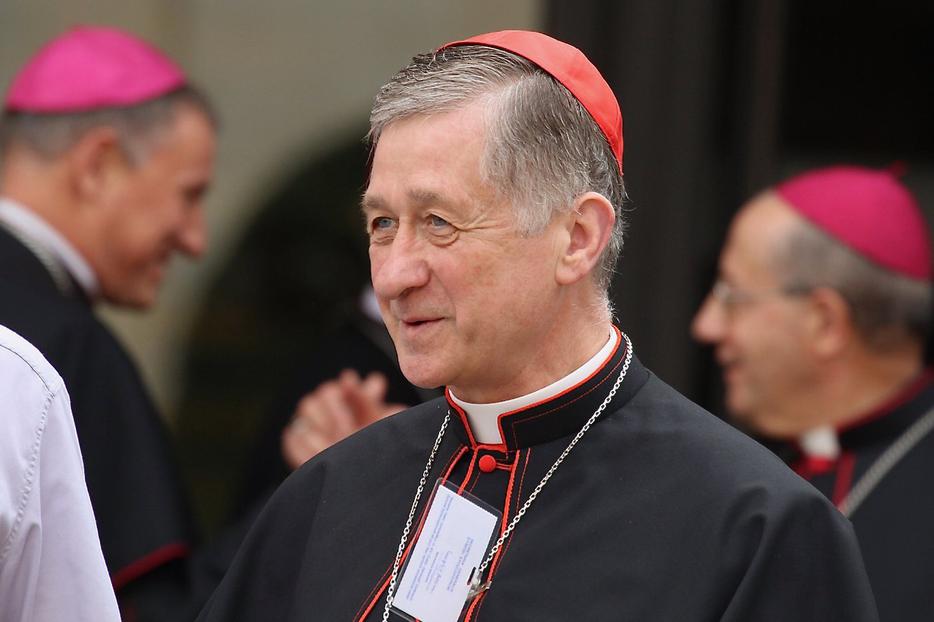Cardinal Cupich: God is a ‘Tricky God’ Who ‘Schemes’ For Our Salvation
Cardinal Cupich cited the Caravaggio painting “The Calling of St. Matthew,” which depicts Matthew “cornered” by Christ.

WASHINGTON, D.C — God is a “tricky God” who schemes for the good of humanity and salvation, Cardinal Blase Cupich of Chicago said in the homily at the Welcome Mass for the United States Conference of Catholic Bishops’ Catholic Social Ministry Gathering in Washington, DC.
“How many times in the scripture have we seen, either telling stories or having encounters with people, who all of a sudden are tricked into salvation,” said Cardinal Cupich.
“We think of the woman at the well - all of a sudden she's talking about all sorts of things and then (Jesus) asks her that question: bring me your husband. And then she ends up evangelizing the entire community even though she's the one who is shunned by God.”
Cardinal Cupich cited the Caravaggio painting “The Calling of St. Matthew,” which depicts Matthew “cornered” by Christ.
“Jesus is at the doorway. There’s no exit for Matthew,” said Cardinal Cupich.
The cardinal explained that these “tricks” extend past scripture, and are present in everyday life.
“How many times in our life have we found ourselves tricked by God?” asked Cupich. These “tricks” include “putting us in situations where, all of a sudden, there was a grace that came from us that we otherwise would have not had.”
These tricks, explained the cardinal, help people to realize they must rely on God, and trust in God and His plan.
“And yet in our lives so often our spiritual relationship with God, we have this little idea in our mind that we've got to be the one to save ourselves, that we have to do something to earn salvation,” he said.
Cardinal Cupich spoke at length about how people today seem more concerned with “image” over anything else. This is misguided, he said, as the “image” of something does not necessarily mean it is the reality.
“We're in a moment of crisis and the life of the Church, where the brand name of the Catholic Church has been seriously damaged because of bad decisions, and so we might think we need a PR firm to get our image back,” said Cardinal Cupich.
“You have to be careful with that though, because the Lord is the one who saved us, but not our image.”
Cardinal Cupich shared a humorous anecdote from when he was consecrated a bishop in 1998. His young niece took several of the prayer cards with his picture on it and brought it to show and tell at her preschool, where her classmates guessed he was a “ninja warrior.”
“How foolish would it be for me to get into that image of keeping up a reputation as a ninja warrior?” asked Cardinal Cupich, to laughter.
“I think of that, because it is foolish as well for us to try to keep up an image that we think (will) please other people,” he said.
Other people choose to make their image a “central preoccupation” of their lives, he said, but the Christian should not.
“It is a good test of whether or not we're open to this God who wants us to trust Him,” said Cardinal Cupich. “A God who in fact schemes to the point of trickiness so that we trust Him.”
Earlier in the day, Cardinal Cupich delivered the opening keynote address, titled “Our Call to Holiness: Life and Justice for All,” to the meeting. In the address, Cardinal Cupich said that Christians should look to the actions of Christ as the inspiration for their lives.
“Our Christian call to holiness is not about being called as individuals, but an invitation from God in which he brings people together, and invites believers to a deeper level of human intercommunion and a shared life,” Cardinal Cupich said during his keynote.
The cardinal reflected on his experience seeing an exhibit of Andy Warhol’s paintings at the Art Institute of Chicago, including one that included an image of the Last Supper superimposed with camouflage. A piece of the camouflage exposed the image of Christ, which Cupich said “forc(ed) the viewer to look for the otherwise familiar image of the Lord at table.”
“May the light of the Gospel help us see through whatever camouflages the needy from our sight, whatever impedes us from being evangelized from those on the margins,” he said.
“For it is in encountering the poor and the marginalized that we are mutually enriched, that we respond to the call to holiness as we take up the social ministry of the Church - because we know that whatever we do for the least of our sisters and brothers, we do for Christ.”
- Keywords:
- cardinal cupich says god is a tricky god who schemes for our salvation
- cardinal cupich speaks at usccb social ministry gathering
- ninja warrior blase cupich












